Known for their elongated bodies, predatory dragonflies are some of the most memorable insects you can see.
Various colors and long transparent wings make dragonflies a distinct type of insect.
A few other species might wrongly be taken as dragonflies either due to an elongated body or due to having similar transparent wings.
Some species might be confused with dragonflies due to shared near-water habits.
Table of Contents
What Does A Dragonfly Look Like?
Dragonflies are native to North America and inhabit areas near water. They are a predatory species feeding on other insects.
Dragonflies have a long tubular body, 3 pairs of legs, forewings, and hindwings.
Oversized wings are specific to the species. These wings can have various levels of transparency.
Dragonflies can be red, yellow, blue, brown, green, or black.
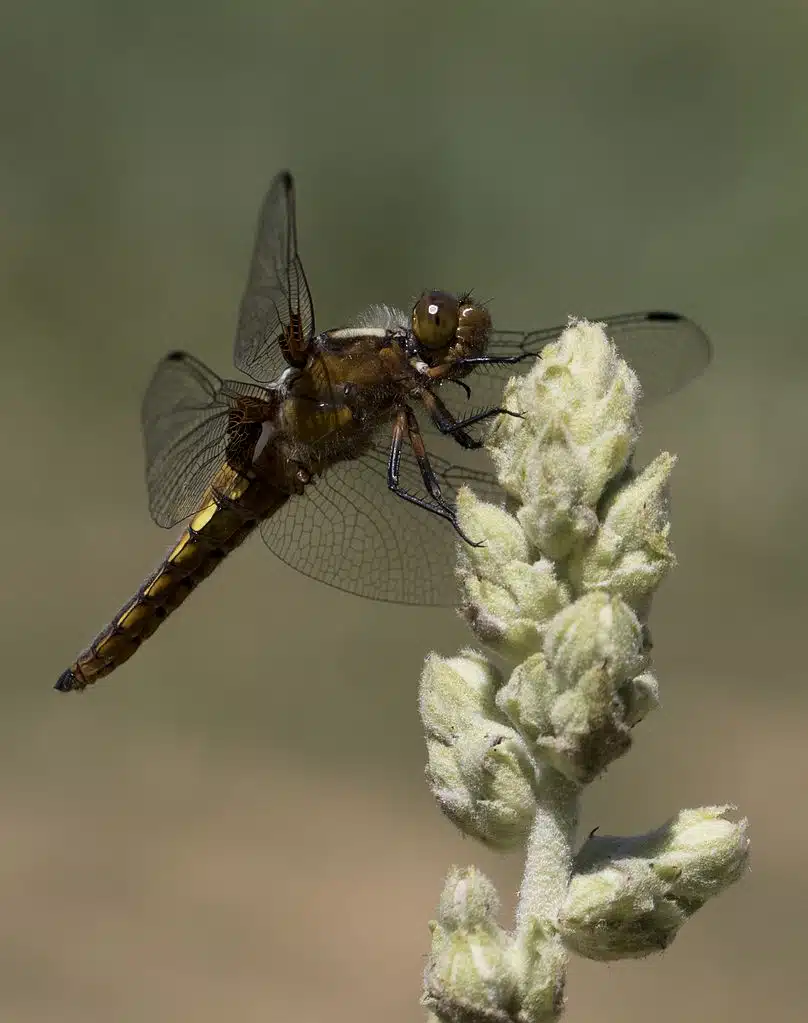
Behavior and Habitat
Dragonflies always live next to the water. Ponds, marshes, and streams are often known to attract dragonflies.
Very good flying capacity and eyesight are traits of dragonflies. These insects can fly at average speeds of 10 miles per hour, making them agile and good predators.
Bugs That Look Like Dragonflies
The following species are the most likely to be confused with dragonflies.
1. Damselflies
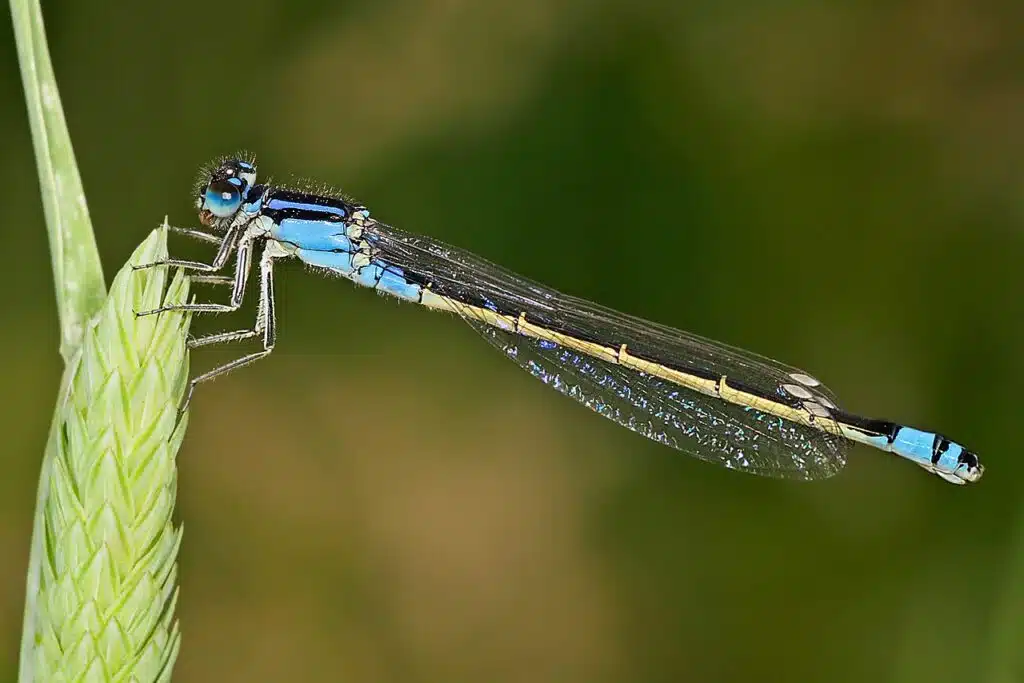
Damselflies are among the most common insects to be confused with dragonflies.
With a similar body shape, damselflies are often taken for dragonflies. However, damselflies are smaller than dragonflies as they mostly measure just over 1 inch.
You can also notice damselflies have smaller eyes compared to the large eyes of dragonflies.
Like dragonflies, damselflies spend most of their lives in wet habitats close to water.
From streams to marshes, these insects are seen across all types of wet habitats in the world.
The quality of these habitats is seen differently between dragonflies and damselflies, on the other hand.
Damselflies only settle in clean water and pristine habitats.
Dragonflies may be found in these areas but they can also be seen in polluted habitats.
Damselflies need clean water to reproduce and they seek out only pure ecosystems to live in as a result.
Mating habits are also somewhat different between the species.
Male damselflies have to demonstrate their physical qualities to the female so that the female accepts mating.
Males achieve this by flying around the female to impress with their flying skills.
The contrasting colors of the male may also attract females. Only males with distinctive physical qualities get to mate at a common rate.
2. Owlflies
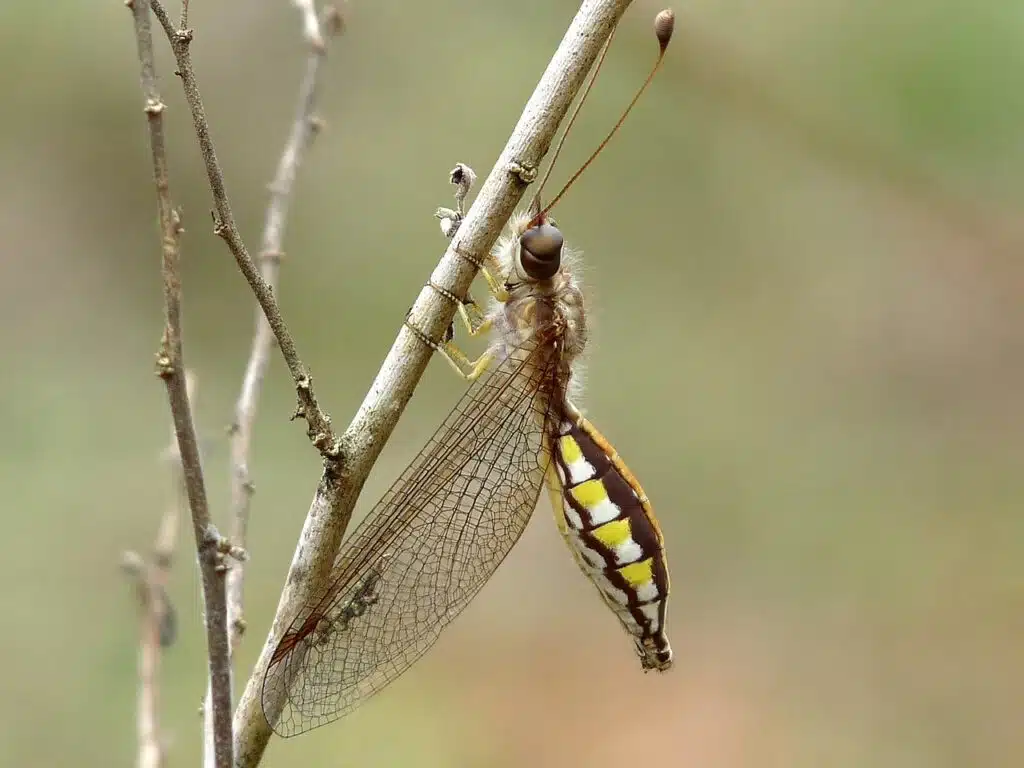
Owlflies are some of the insects commonly confused with dragonflies. There are many types of owlflies in temperate regions of the world.
These insects sometimes have 4 wings similar to the wings of dragonflies but they can also have angled hindwings.
Owflies are also similar to dragonflies in eating habits. They catch small flying insects in the air, as predators.
However, almost all how flies have long antennae. Their antennae make for quick species differentiation as they can be as long as the body of the fly.
The habits of the species might also be different from the habits of dragonflies.
Split-eyed owlflies are known to only come out for food early in the morning, which inspires the name of the species.
Owflies also have distinct defensive characteristics.
They can emit a chemical scent whenever bothered by another species or a potential nearby predator.
3. Antlions
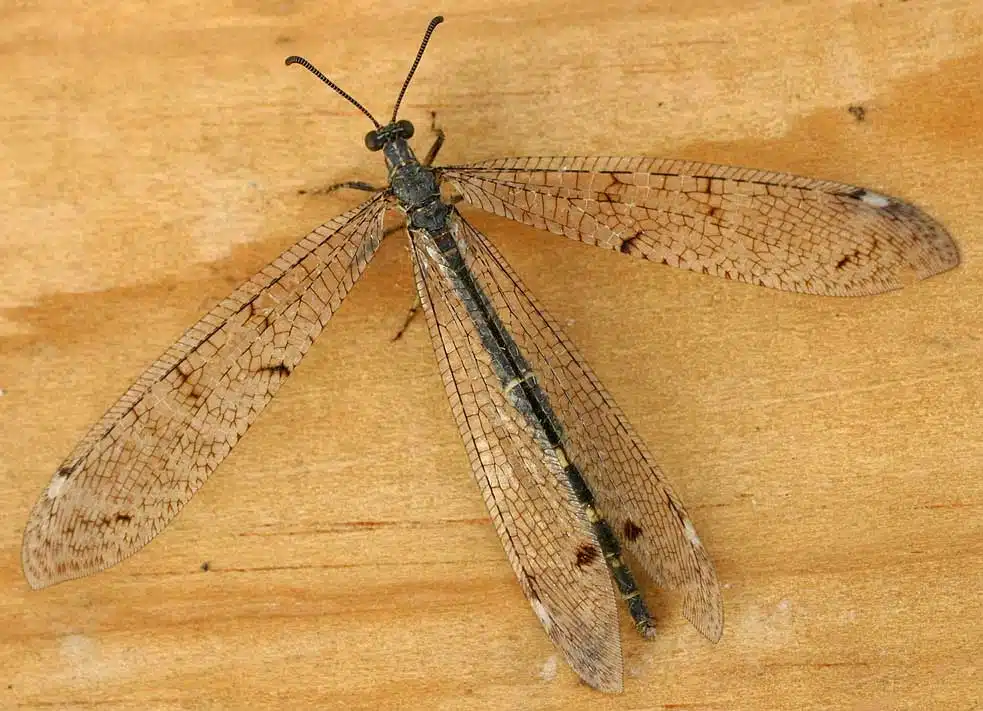
Antlions are commonly confused with dragonflies and other species that resemble dragonflies.
The time of day you see Antlions can help correctly identify the species. These flies are only active in the evening, as opposed to morning or daytime flights of dragonflies and other similar species.
The antennae of the species are also thicker and longer than the antennae of dragonflies.
Habitat and hunting preferences can also vary among the different types of Antlions.
Some Antlions only come out at night, they can even make it indoors mostly attracted to light rather than food.
These flies are known for having different eating habits as they can be moving along soil and sand to find ground-dwelling bugs and insects to feed on.
A less common method of telling antlions from dragonflies involves analyzing the wings. Veins tend to be more visible on dragonflies which also tend to have more similar forewings and hindwings.
4. Green Lacewings
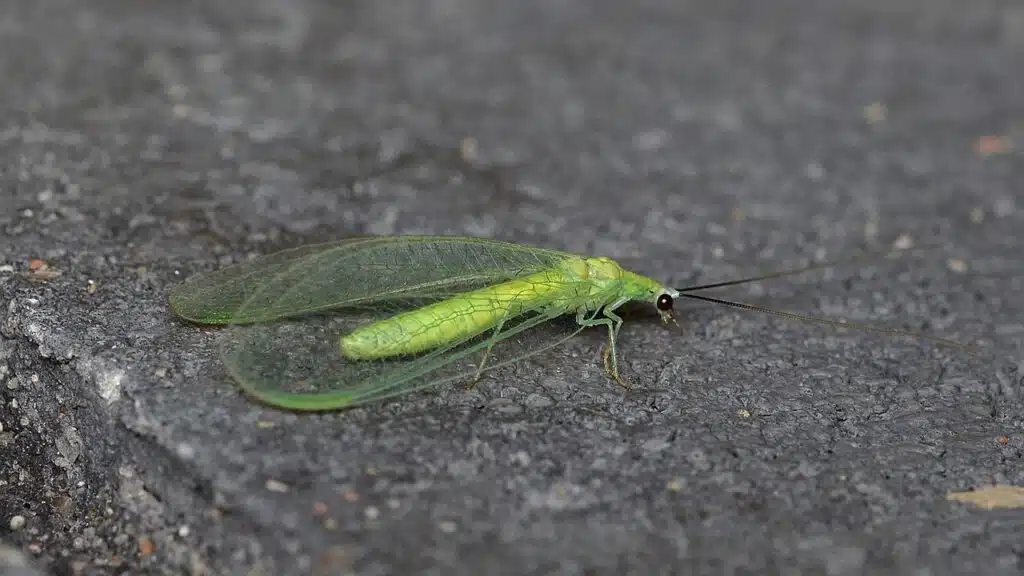
Green lacewings have a lesser distribution compared to dragonflies. However, they are still seen across North America and Europe.
Analyzing the position of resting wings is one of the easiest methods of telling green lacewings and dragonflies apart.
Green lacewings fold their wings in a triangular upward-facing position while the resting wings of dragonflies remain flat over the body.
Green lacewings also have long antennae that may measure as long as the body itself.
The diet preferences of green lacewings also set them apart compared to dragonflies.
These green insects feed both on nectar and insects.
A preference for pollen and nectar is specific to the species. They can also eat small insects such as various mites.
Green lacewings aren’t easily seen eating as nocturnal fliers.
They might only be seen during the day looking for aphid honeydew to feed on.
5. Ichneumon Wasps
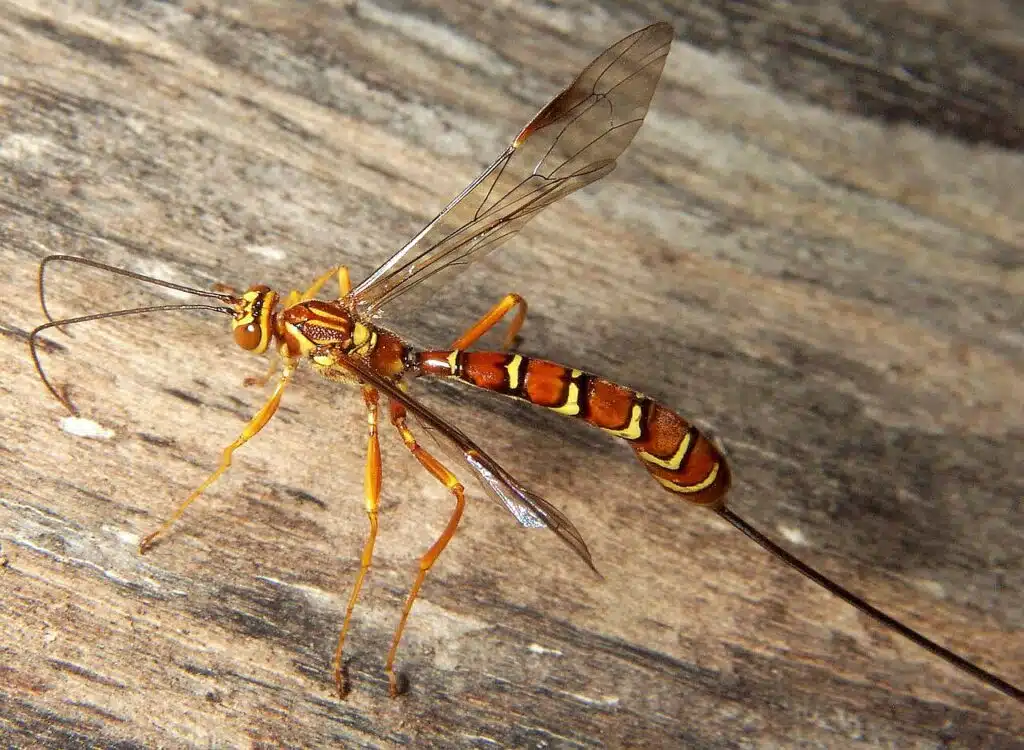
An elongated body with long wings is also specific to Ichneumon wasps. These types of wasps may have transparent wings but they can also have black wings.
These wasps are predatory and they can also have very long antennae, not specific to dragonflies.
Ichneumon wasps eat nymphs or immature spiders or other bugs, unlike dragonflies eat a wider range of insects, even in adult stages.
You can further identify the females of the species due to their long ovipositors at the tip of the body.
By comparison, female wasps of this genus are the easiest to distinguish from dragonflies.
The body of the female is wider than the body of a dragonfly. Furthermore, the long thin ovipositor of the female Ichneumon wasps makes them different from the long slender body of dragonflies.
Unlike dragonflies, female Ichneumon wasps can use their ovipositors to lay eggs directly in the ground or a host species.
Dragonflies lay eggs in water or on aquatic plants and flowers.
Summary
Damselflies and owlflies are among the bugs that resemble dragonflies the most.
Different feeding times and long antennae typically help distinguish these dragonflies from these species. Mating habits and the capacity dragonflies have to lay eggs in still water is what can further separate them from similar species.